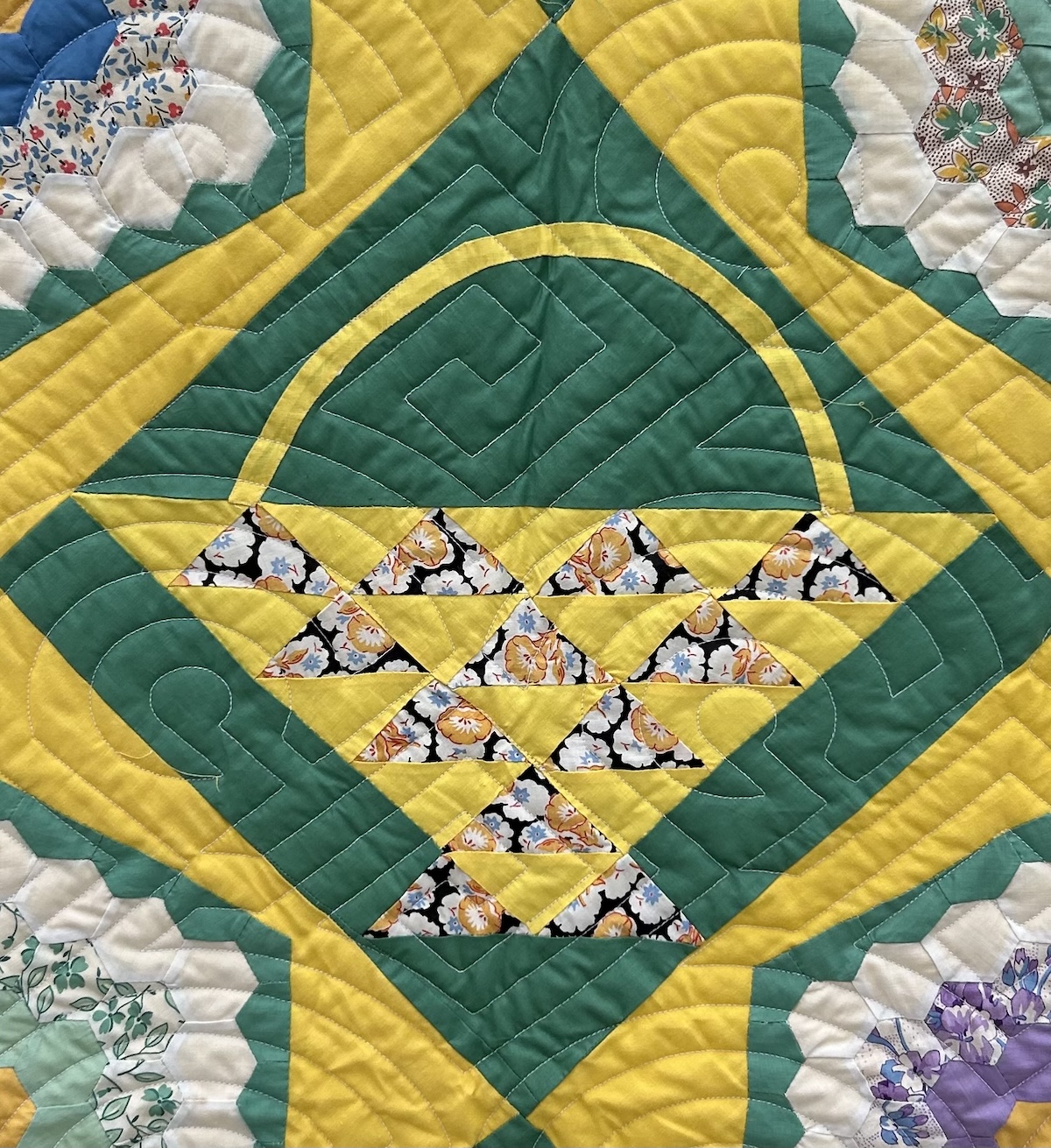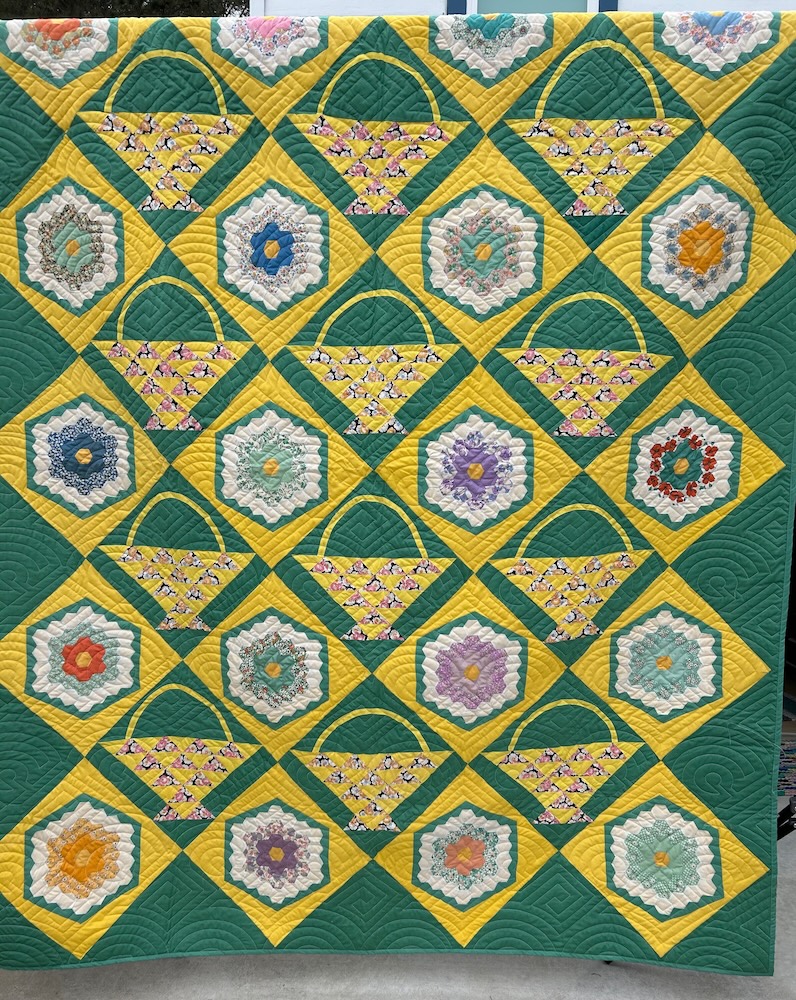Quilting farom Wyoming to Santa Barbara

The house and the barn, built in 1901, was located on a dreary plain on a frontier homestead, 169 acres that her husband chose near Rosette, Wyoming; a work-filled ranch of crops and livestock on the American Prairie which stretched as far as Zertta’s 24-year-old eyes could see. Ten years lay ahead of her, living on that Prairie homestead with her husband Barney and five children – 10 years of struggling with minus 40-degree winters, blizzards, prairie fires, grasshopper plagues, and drought. She had one fallback to rely on in this desolate place where her nearest neighbors were miles away, and that was her needlework.
This article is about facing survival with patches of fabric (or early American Quilt making), and features a quilt that a member of the Coastal Quilters Guild of Santa Barbara and Goleta brought back to life: a ‘rescue’ quilt, as RH calls it, begun on Zertta Marquiss’ Prairie homestead almost 125 years ago.
A woman needed help out there on the great Prairie in 1901. Zertta’s older sister joined the family, and Zertta’s youngest girl was taught do “inside” work – such as making clothing, curtains, quilts, and drag carpets. When the females of the homestead were not too tired with their many chores, they took up “fancy” work; fine appliqué work. Quilts were functional, used for warmth, and were economical, but Zertta wanted to bring a semblance of gracious living to the Prairie. She saved her favorite pieces of fabric, storing them away to make her best quilt one day. The original squares were cut from Zertta’s curtains and old clothing, dating from the first quarter of the 20th century on that Wyoming homestead.

The quilt has an origin story which began on the Prairie but was finished in Santa Barbara by another expert needlewoman. This quilt features unique early 20th century fabrics; the start of the quilt on a homesteaded ranch in a 40 degree below Wyoming winter couldn’t be more different than the finish of the quilt in sunny seaside Santa Barbara.
The quilt, finished by RH 125 years after the first fabric squares were cut, is to be featured at an exhibit at Earl Warren Showgrounds on October 5th and 6th in the “Harvest of Colors” quilt show as part of the featured exhibit called, Preserving our Quilt Heritage/California Heritage Quilt Project.
Tickets and info at www.coastalquilters.org
RH, a member of the Coastal Quilters Guilt of Santa Barbara and Goleta, conveyed to me this scenario of homesteading on the prairie described in a letter from Zertta’s granddaughter Dorothea. In this letter we are told that Zertta cut those squares for her quilts for a lifetime. But she made a special test mini-quilt (the original “block” is the small center-completed appliqued design square in the finished quilt) and saved it in an old trunk. That is the key to the quilt which enabled RH to follow Zertta’s design concept.
Zertta’s training as a needle woman began as one of 10 children in Broken Bow, Nebraska at her family-run boarding house, and her talent was furthered during her married life. Her hands were never idle during the Great Depression, and during WWII she supervised the County Work Room on the third floor of the local Courthouse as women made quilts for wounded soldiers and sailors. Zertta’s granddaughter Dorothea remembers returning from school to witness the huge wooden quilting frame in the living room, women quilting at the four sides.
Toward the end of her life, Zertta came to California to live with her grown daughter and family. As a grandmother in Dorothea’s house, where her daughter was raising four children, both mother and grandmother were too busy to finish piecing the squares into a sewn quilt. And so, the pieces sat in a trunk, waiting. When Dorothea inherited the trunk of quilt blocks in 1991, she took a quilting class but never tried to finish Zertta’s quilt.
When RH was gifted the pieces (called quilt blocks) she decided to finish the quilt in honor of Zertta (born in Iowa, 1877). Because the fabric squares were cut during Zertta’s long lifetime of 83 years, many were unsuitable together, geometrically speaking. RH found vintage fabric at garage sales and finished Zertta’s quilt as a “rescue quilt,” writing me that a person can save dogs, cats and even bunnies, so why not a quilt? This quilt has been preserved as a bit of American Frontier History. The value is beyond my estimation!







You must be logged in to post a comment.